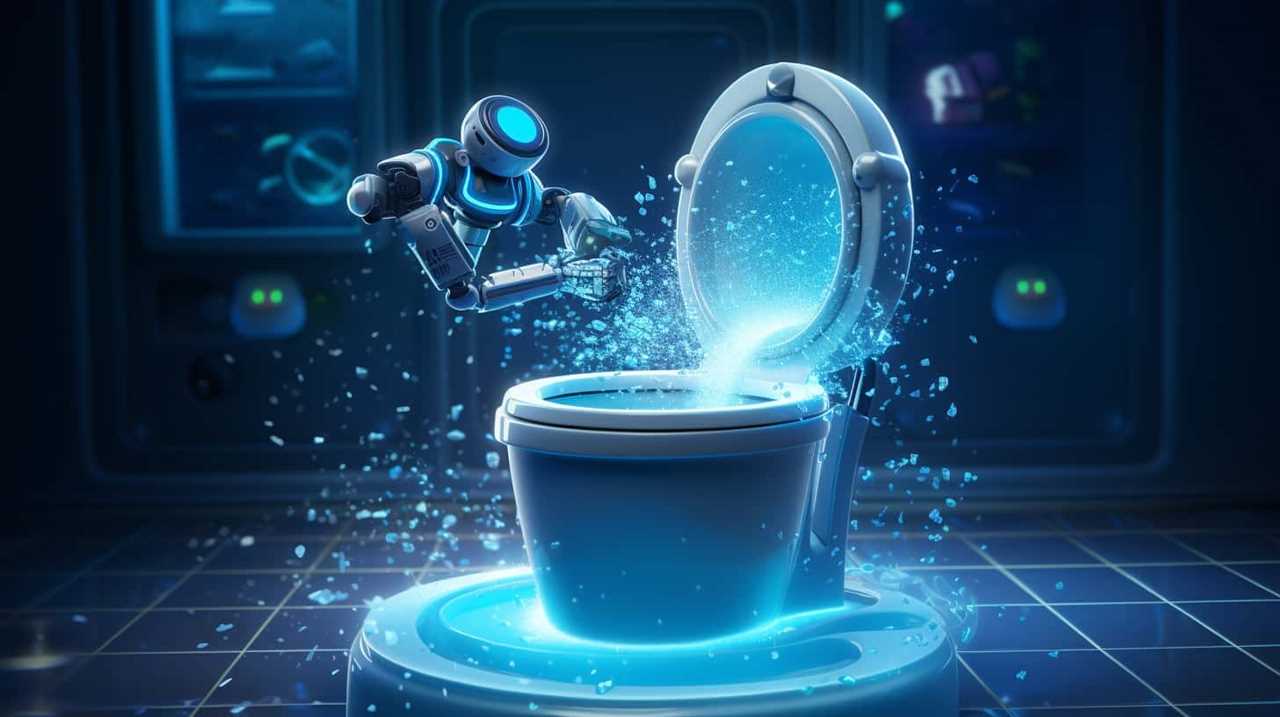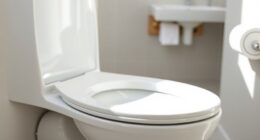You might be wondering, ‘Is it actually safe to flush textiles down the toilet?’ The response could catch you off guard.
In this article, we’ll explore the potential risks and consequences of flushing cloth, as well as the types of cloth that should never be flushed.
We’ll also discuss the impact on plumbing and the sewer system, and provide alternatives and proper disposal methods.
So, if you want to master the art of cloth disposal, keep reading!

Key Takeaways
- Flushing cloth down the toilet can lead to clogged pipes, sewer backups, and damage to sewage systems.
- Cloth diapers, feminine hygiene products, paper towels, and non-flushable fabrics should never be flushed.
- Flushing cloth can cause plumbing and sewer system issues, such as pipe clogs and filtration system blockages.
- Environmental consequences of flushing cloth include water pollution, ecosystem disruption, and marine life endangerment.
Potential Risks of Flushing Cloth
The potential risks of flushing cloth down the toilet include clogged pipes, sewer backups, and damage to sewage systems. Flushing cloth down the toilet can lead to the accumulation of material in the pipes, causing them to become blocked. This can result in water backup and potential flooding, creating a hazardous situation for both the individual and the surrounding environment.
Additionally, the cloth can also cause damage to the sewage system itself, leading to costly repairs and maintenance. In order to mitigate these risks, it’s important to avoid flushing cloth down the toilet altogether. Instead, proper disposal methods such as placing cloth in the trash or recycling it should be followed.
Types of Cloth That Should Never Be Flushed
When it comes to flushing cloth down the toilet, there are certain types that we should never attempt to dispose of in this manner. Flushing cloth can cause serious damage to the plumbing system and result in expensive repairs. For this reason, it’s important to know which types of cloth should never be flushed.
Firstly, cloth diapers should never be flushed as they can clog pipes and cause blockages. Similarly, feminine hygiene products like tampons and sanitary pads shouldn’t be flushed as they can also lead to clogs and backups.

Additionally, paper towels and facial tissues shouldn’t be flushed as they aren’t designed to break down in water like toilet paper. It’s essential to properly dispose of these types of cloth in the trash to avoid the disadvantages of flushing cloth and the consequences of improper cloth disposal.
Impact on Plumbing and Sewer System
Flushing cloth down the toilet can have detrimental effects on our plumbing and sewer system. It’s important to understand the impact it can have on wastewater treatment plants and the cost associated with repairing damaged plumbing.
Here are three key points to consider:
- Clogging: Cloth materials, such as wipes or sanitary products, can cause blockages in the pipes. These blockages can lead to backups and overflows, resulting in costly repairs and potential damage to the sewer system.
- Wastewater Treatment: Cloth flushed down the toilet can make its way to wastewater treatment plants. The presence of cloth can clog filtration systems and hinder the treatment process, leading to increased maintenance and operational costs.
- Repair Expenses: Repairing damaged plumbing caused by cloth flushing can be expensive. It may involve locating and removing the blockage, repairing or replacing damaged pipes, and restoring the overall functionality of the plumbing system.
To avoid these issues, it’s crucial to dispose of cloth materials properly and only flush toilet paper, which is designed to break down quickly in the sewer system.
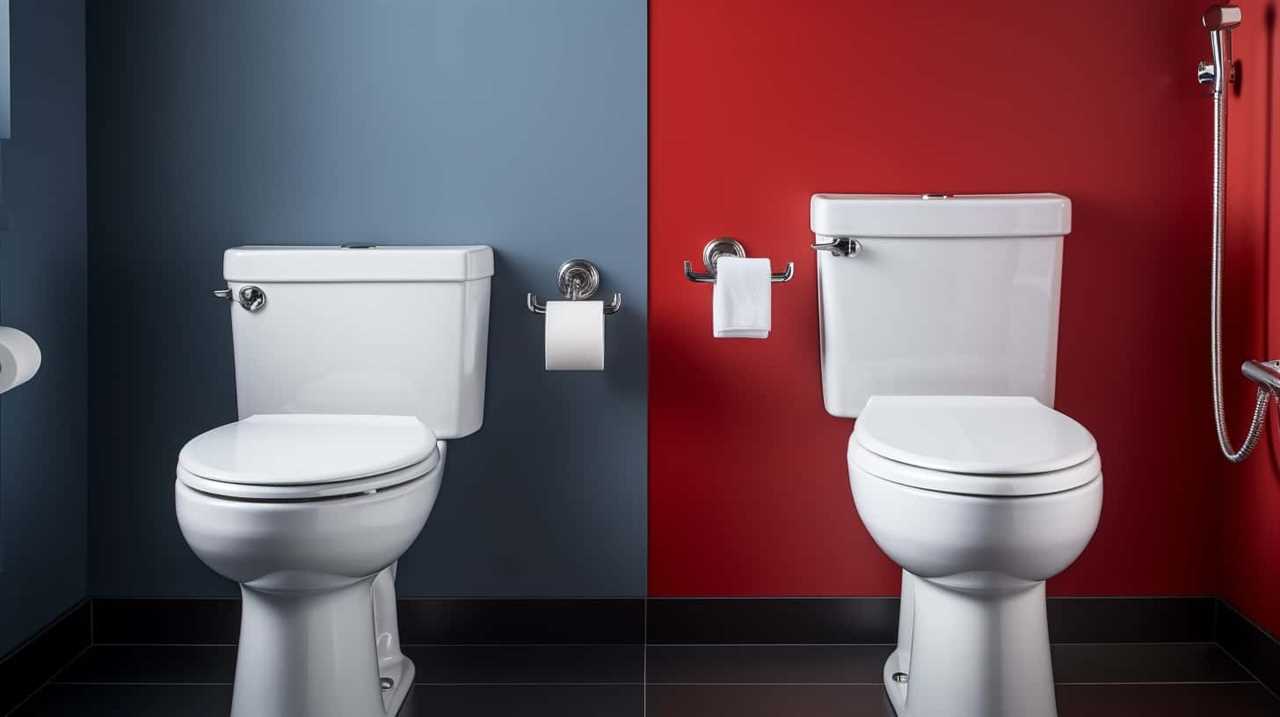
Environmental Consequences of Flushing Cloth
Unfortunately, we frequently overlook the environmental consequences of flushing cloth down the toilet. Not only does this practice pose a risk to our plumbing and sewer systems, but it also has significant environmental implications and long-term effects. When cloth is flushed, it can clog pipes and cause blockages in the sewage system, leading to costly repairs and potential health hazards. Moreover, the presence of cloth in wastewater treatment plants can interfere with the filtration process, potentially releasing harmful pollutants into the environment. To further illustrate the severity of this issue, consider the following table:
| Environmental Consequences | Long-Term Effects |
|---|---|
| Water pollution | Ecosystem disruption |
| Marine life endangerment | Soil contamination |
| Increased carbon footprint | Decreased water quality |
Clearly, flushing cloth down the toilet not only impacts our immediate surroundings but also has far-reaching consequences for the environment. It is imperative that we educate ourselves and make more sustainable choices to protect our planet for future generations.
Alternatives to Flushing Cloth Down the Toilet
To avoid the environmental consequences of flushing cloth down the toilet, we can consider alternative disposal methods. Instead of throwing cloth into the toilet, here are some proper disposal methods to consider:
- Recycling: Many types of cloth can be recycled, such as cotton and linen. Check with your local recycling center to see if they accept cloth materials.
- Composting: If the cloth is made of natural fibers, like cotton or hemp, it can be composted. Cut it into smaller pieces to speed up the decomposition process.
- Donation: If the cloth is still in good condition, consider donating it to charities or thrift stores. This way, it can be reused by someone else.
By choosing these alternatives, we can prevent clogged pipes, sewage backups, and reduce the strain on our environment.
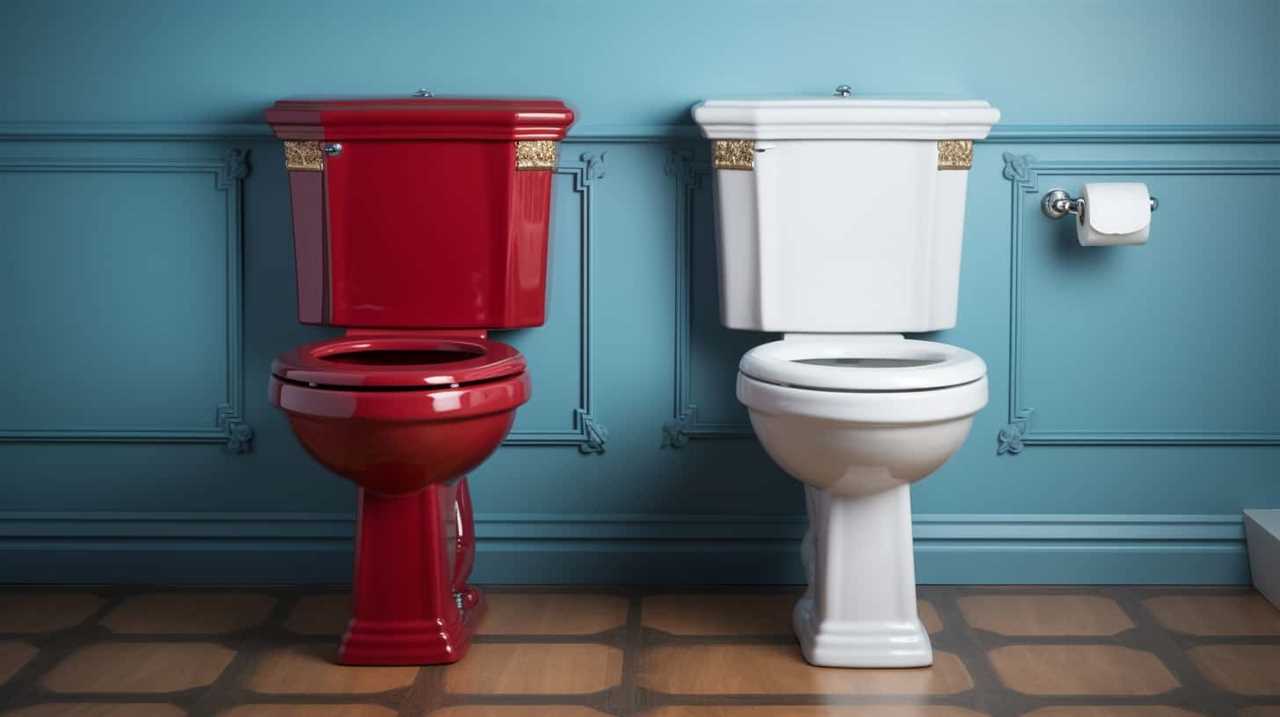
Let’s make responsible choices when it comes to the disposal of cloth materials.
Proper Disposal Methods for Cloth Items
When it comes to proper disposal methods for cloth items, there are a few options to consider.
Recycling cloth items is a great way to reduce waste and give them a new life. Many communities have textile recycling programs that accept old clothes and other fabric waste.
Another option is composting fabric waste, as certain types of cloth can break down and provide nutrients to the soil. However, it’s important to check for any labels or treatments that may prevent cloth items from being composted.
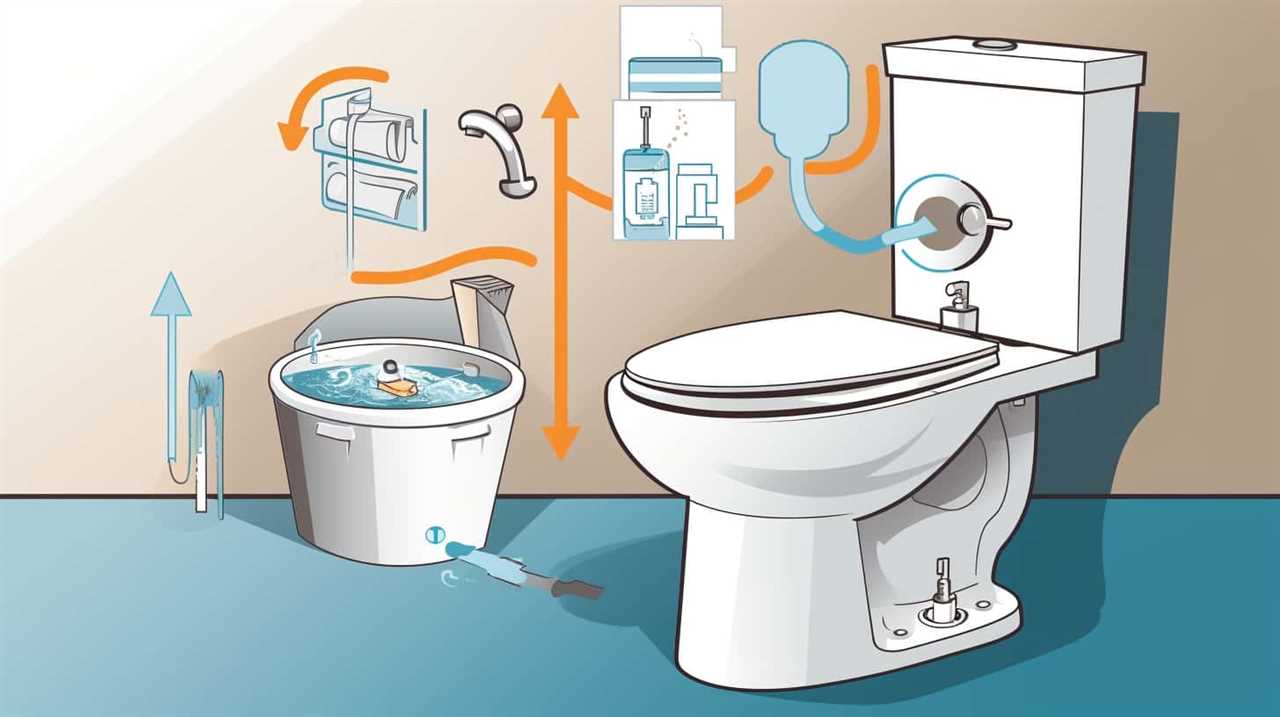
Recycling Cloth Items
For proper disposal of cloth items, we should consider recycling them instead of flushing them down the toilet. Recycling cloth materials not only helps to reduce cloth waste but also contributes to the preservation of natural resources and the environment.
Here are three reasons why recycling cloth items is a beneficial practice:
- Resource Conservation: Recycling cloth materials reduces the need for raw materials, such as cotton and polyester, which are used in the production of new textiles. By recycling, we can conserve these valuable resources and minimize the environmental impact associated with their extraction and processing.
- Energy Savings: Recycling cloth items requires less energy compared to manufacturing new textiles from scratch. The recycling process involves breaking down the cloth into fibers, which can then be used to create new fabrics. This significantly reduces the energy consumption and greenhouse gas emissions associated with textile production.
- Waste Reduction: Recycling cloth items helps divert them from landfills. Textiles take a long time to decompose and can contribute to the generation of methane, a potent greenhouse gas. By recycling, we can extend the lifespan of cloth items and minimize the amount of waste sent to landfills.
Composting Fabric Waste?
We frequently compost fabric waste as part of our sustainable cloth disposal methods. Composting fabric waste is an effective way to reduce textile waste and minimize its impact on the environment. When fabric items are no longer usable or repairable, they can be broken down through composting, which converts them into nutrient-rich organic matter.
To compost fabric waste, it’s important to ensure that the items are made from natural fibers such as cotton, linen, or hemp, as synthetic fabrics like polyester or nylon don’t break down easily. Before composting, it’s recommended to cut fabric items into smaller pieces to speed up the decomposition process. It’s also important to avoid adding fabric items that have been treated with chemicals or dyes, as these can contaminate the compost.
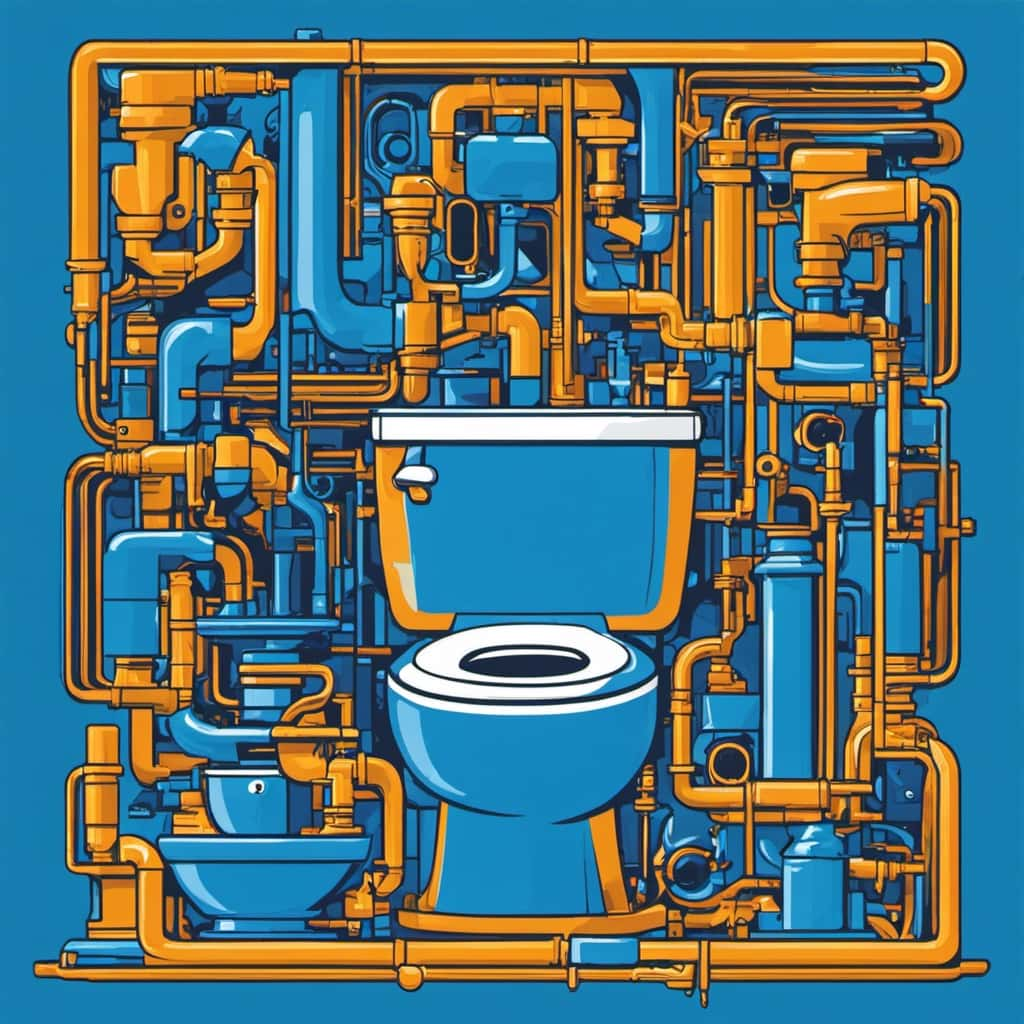
Common Misconceptions About Flushing Cloth
Despite numerous misconceptions, cloth should never be flushed down the toilet. Flushing cloth can lead to potential health hazards and costly repairs to plumbing systems.
- Potential health hazards: Flushing cloth can cause blockages in the sewage system, leading to backups and overflows. This can result in the release of harmful bacteria and pathogens into the environment, posing a risk to public health.
- Cost of repairing plumbing systems: Flushing cloth can clog pipes and sewer lines, requiring expensive repairs. Cloth materials, such as wipes or sanitary products, don’t break down easily and can cause blockages in the plumbing system. Plumbers often need to be called to remove the cloth and restore proper flow, which can be a costly and time-consuming process.
- Environmental impact: Flushing cloth contributes to pollution and environmental damage. Cloth materials can end up in water bodies, affecting aquatic life and ecosystems. Additionally, the energy and resources required to repair the damage caused by flushing cloth further contribute to environmental degradation.
It is important to dispose of cloth waste properly by using designated trash bins or recycling programs to avoid these potential hazards and costs.
Tips for Maintaining a Healthy Plumbing System
To ensure the longevity and efficiency of your plumbing system, proper maintenance is essential. Regular maintenance not only prevents costly repairs but also promotes a healthy plumbing system. Here are some tips for maintaining a healthy plumbing system:
| Tip | Description |
|---|---|
| Schedule regular inspections | Regular inspections allow a professional plumber to identify and address any potential issues before they escalate into major problems. |
| Avoid using disposable options | Opt for reusable alternatives whenever possible to reduce the risk of clogs and damage to your plumbing system. |
| Practice good drain care | Avoid pouring grease, oil, or coffee grounds down the drain, as they can lead to clogs and damage to your pipes. Instead, dispose of them in a proper container. |
Conclusion: Making Smart Choices for Cloth Disposal
Making smart choices for cloth disposal is crucial for maintaining a healthy plumbing system. Properly disposing of cloth waste not only prevents clogs and blockages but also helps protect the environment. Here are some key points to consider when disposing of cloth items:

- Composting fabric waste: Instead of throwing away old clothes or fabric scraps, consider composting them. Natural fibers like cotton and linen can break down and enrich the soil when composted properly.
- Recycling cloth items: Many cloth items, such as clothing, linens, and towels, can be recycled. Look for recycling programs or textile recycling centers in your area. These facilities can transform old textiles into new products, reducing the need for virgin materials and minimizing waste.
- Donating or repurposing: Before discarding cloth items, consider donating them to charitable organizations or repurposing them for other uses. This not only extends the lifespan of the fabric but also reduces waste and benefits those in need.
Conclusion
In conclusion, it’s important to remember that flushing cloth down the toilet can lead to serious consequences for both your plumbing and the environment.
It’s crucial to properly dispose of cloth items in designated bins or through recycling programs. By making smart choices and following proper disposal methods, we can maintain a healthy plumbing system and help protect our sewer systems and the planet.
Remember, every small action counts towards a cleaner and more sustainable future.
